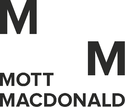Data from a Building Survey at Railway Cutting Euston to Parkway, Camden, 2020-2021 (HS2 Phase One)
High Speed Two Ltd., Mott MacDonald, 2023. https://doi.org/10.5284/1120844. How to cite using this DOI
- HS2 Phase One: London to West Midlands Historic Environment Digital Archive
- Curated Collection: The Digital Preservation of Modern History in Camden, London
Data copyright © High Speed Two Ltd. unless otherwise stated
This work is licensed under a The Open Government Licence (OGL).
Primary contact
High Speed Two Ltd.
2 Snowhill
Queensway
Birmingham
B4 6GA
United Kingdom
Tel: 08081 434 434
Resource identifiers
- ADS Collection: 4253
- DOI:https://doi.org/10.5284/1120844
- How to cite using this DOI
Introduction

The archive collection comprises a digital archive only. This includes text, including the Project Plan and Location-Specific Written Scheme of Investigation for the historic building recording; raster images, comprising photographs selected to support the historic building report which is included in the OASIS record; and orthographic images produced using photogrammetry, along with the raw data used to produce the orthographic images in the form of JPG photographs.
Project Summary
Recording has been undertaken in accordance with Historic England guidance for the recording of historic buildings, as per the requirements of the Heritage Agreement Method Statement. HS2 Technical Standards (Specification for Historic Environment Investigations, Document number HS2-HS2-EV-STD-000-000035) has been adhered to during the recording exercise. The HS2 Technical Standards informed the development of this method statement but are not material to or required by the Heritage Agreement.
A Level 2 descriptive record is required for the asset. This has been specified in accordance with guidance in the Historic England document, which states that Level 2 is appropriate when a building which is judged not to require a more detailed record, or it may serve to gather data for a wider project (Historic England, 2016). The record comprises an interior and exterior inspection, and a written account accompanied by photographs and some drawings.
Re-Use Value Statement
This archive provides a comprehensive descriptive, analytical and visual record of the Railway Cutting Euston to Parkway and its setting as of 2020.
The archive can provide information for any future research regarding the asset or Railway Cutting Euston to Parkway, which would benefit from an accurate record of the asset, which is otherwise inaccessible to the public. The archive can also be of benefit to the management of any future works to the asset, which may require an understanding of its design and materials, as well as its significance, in order to guide development designs.





